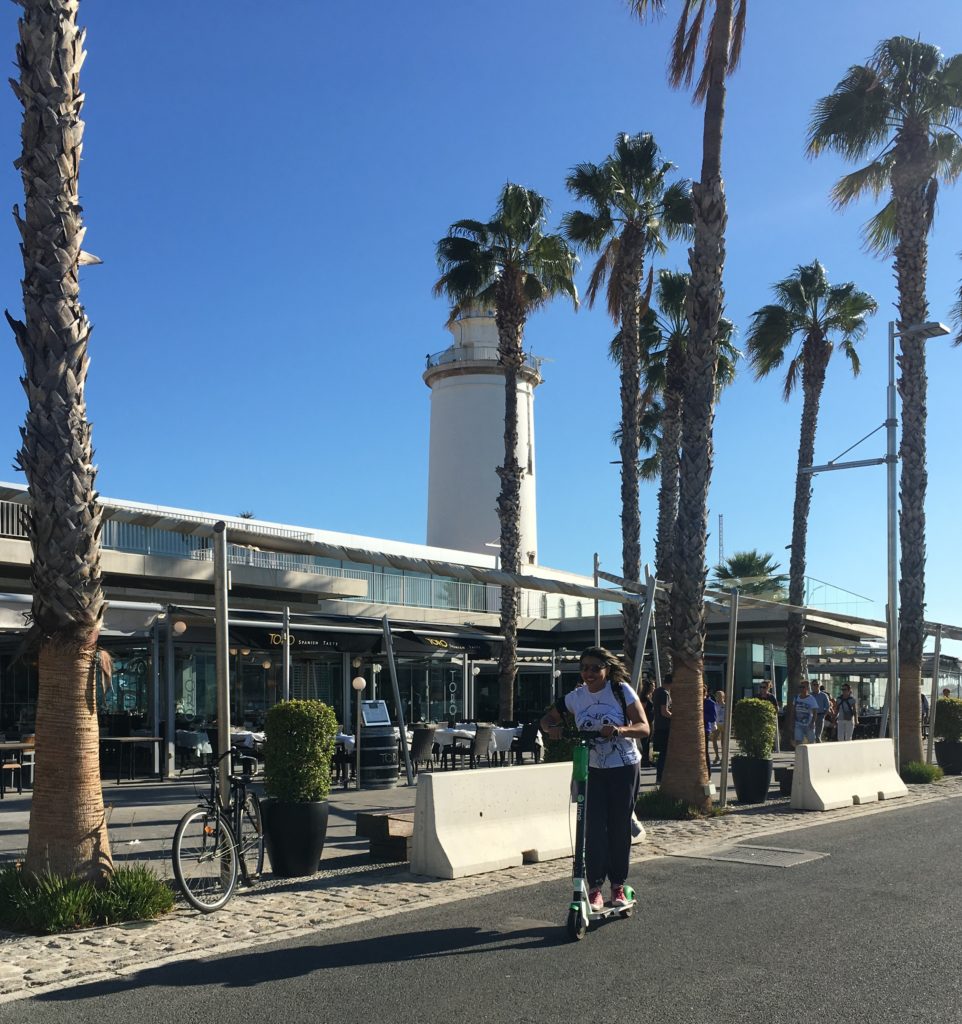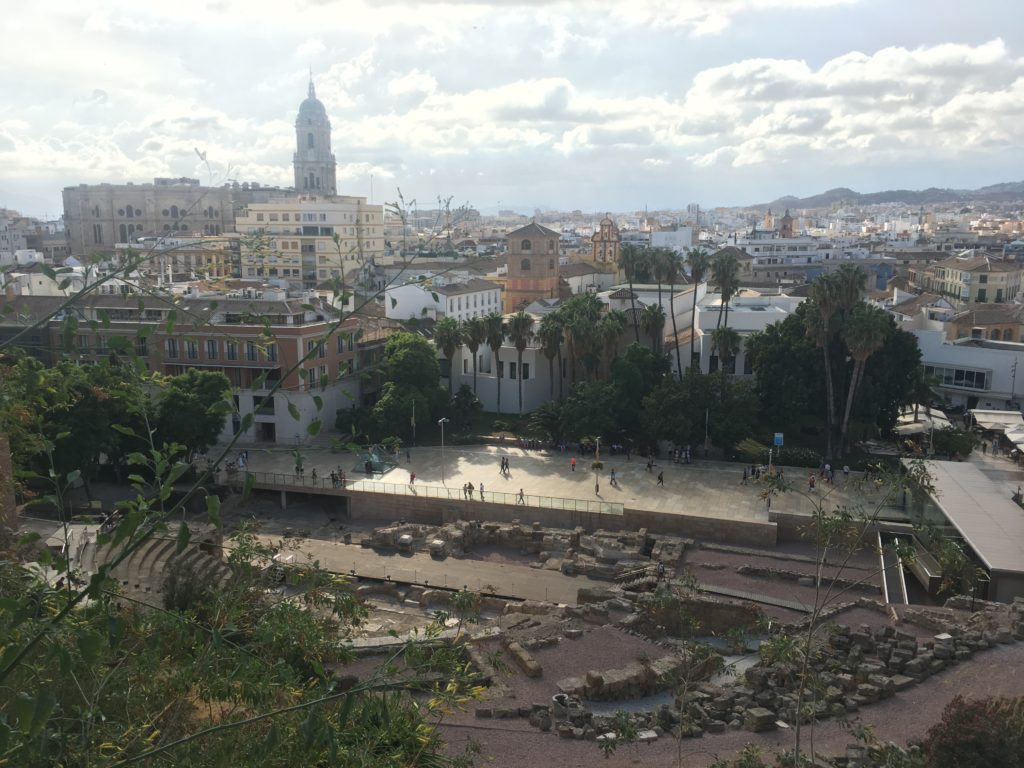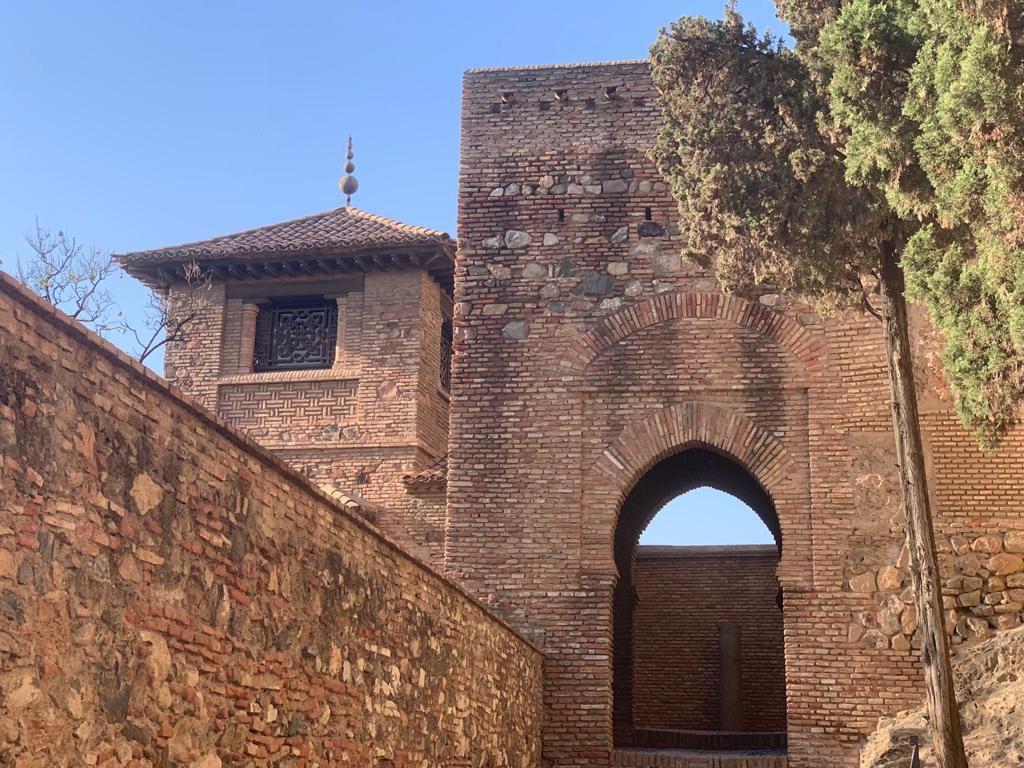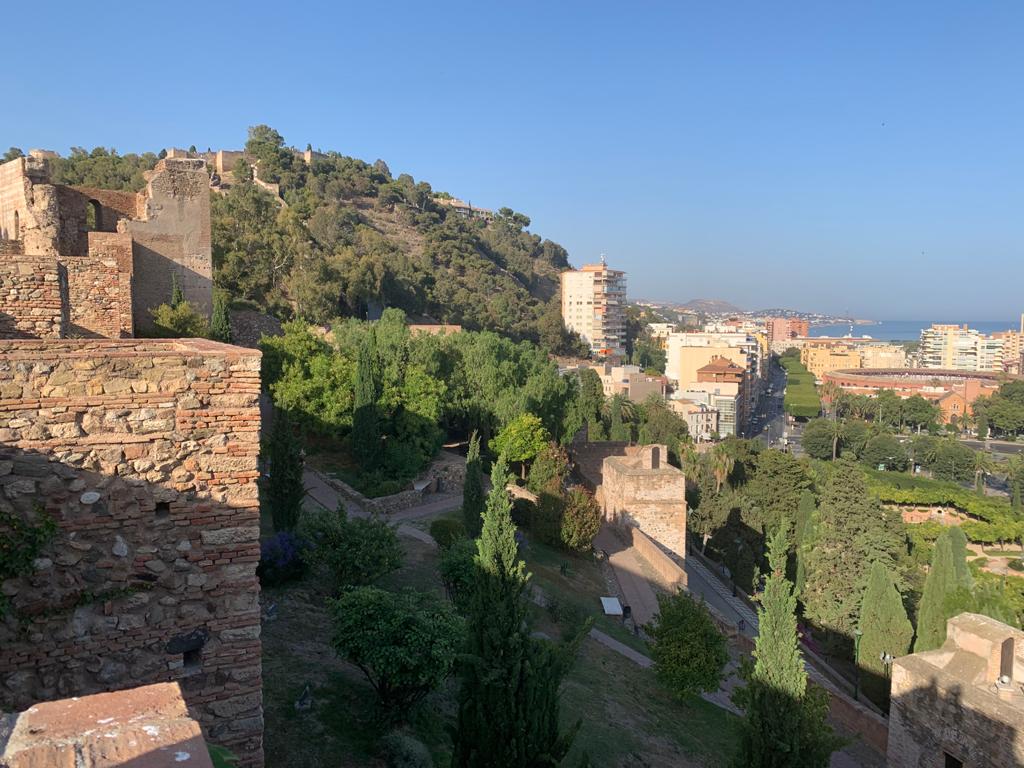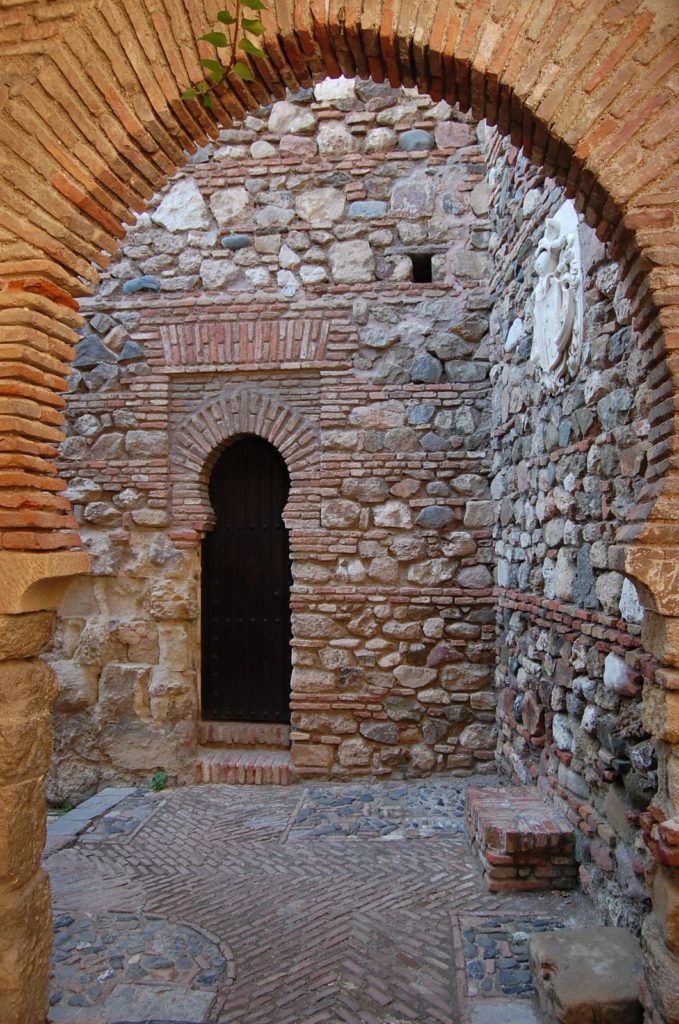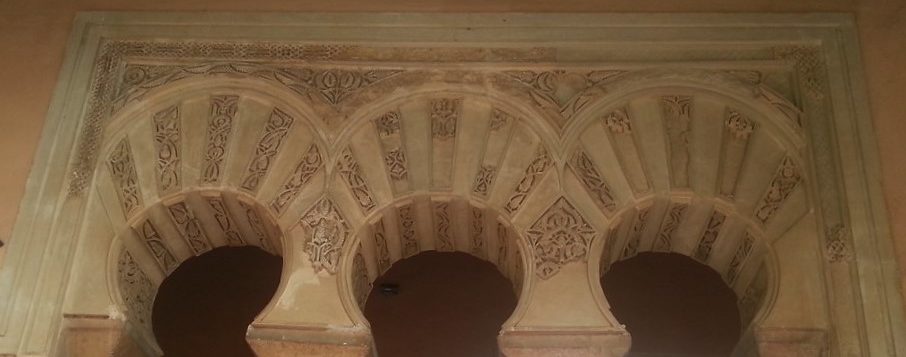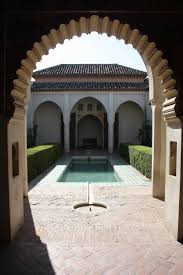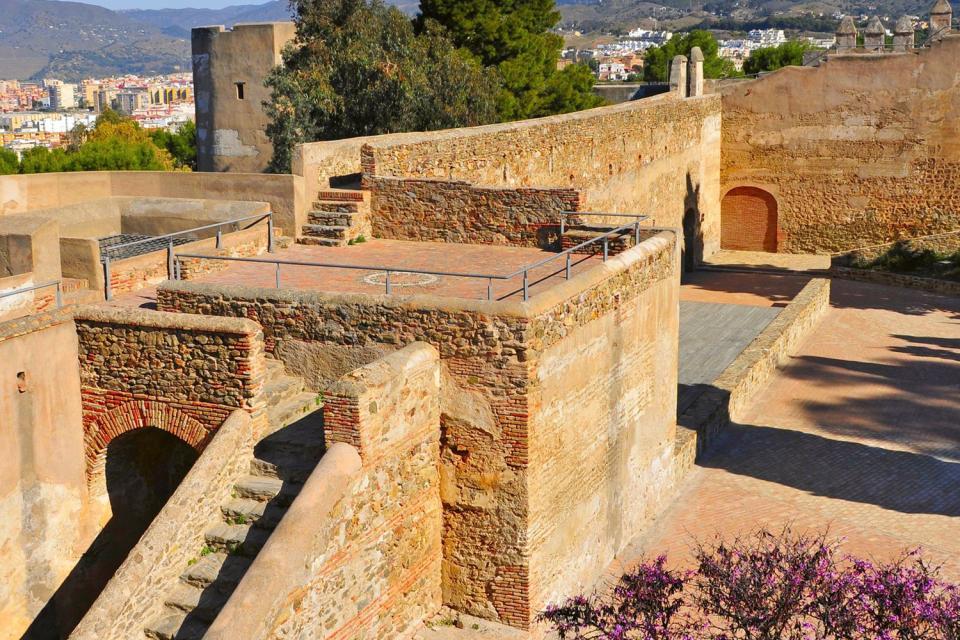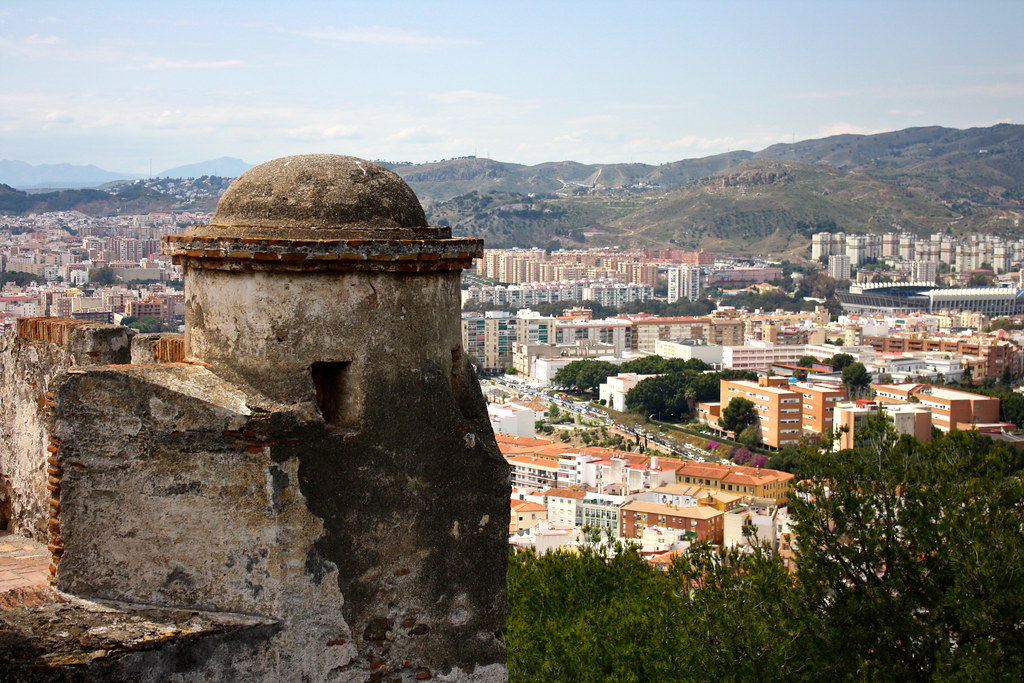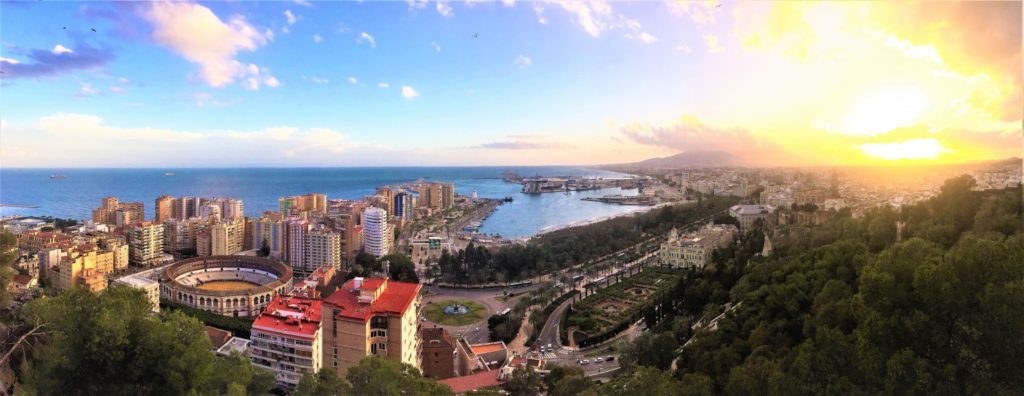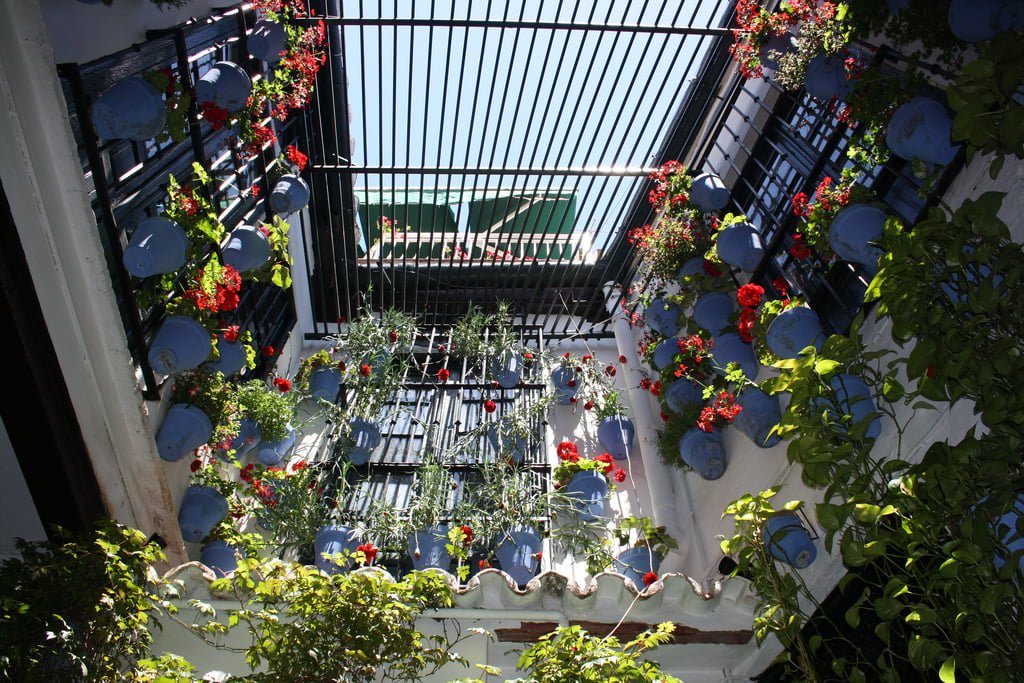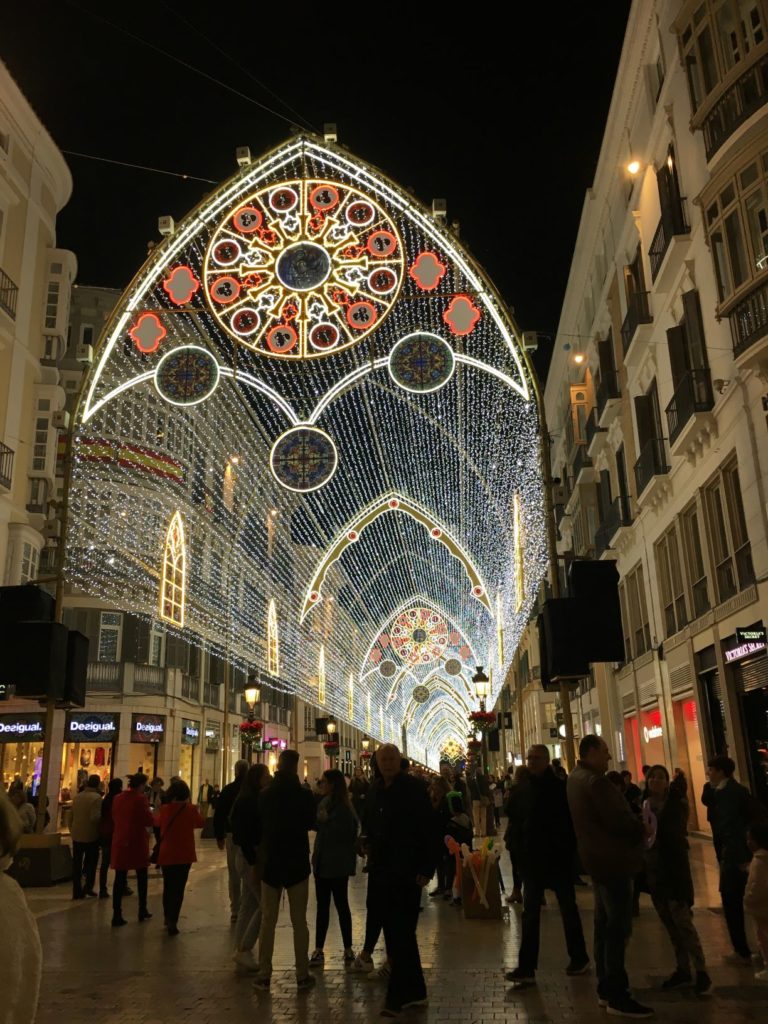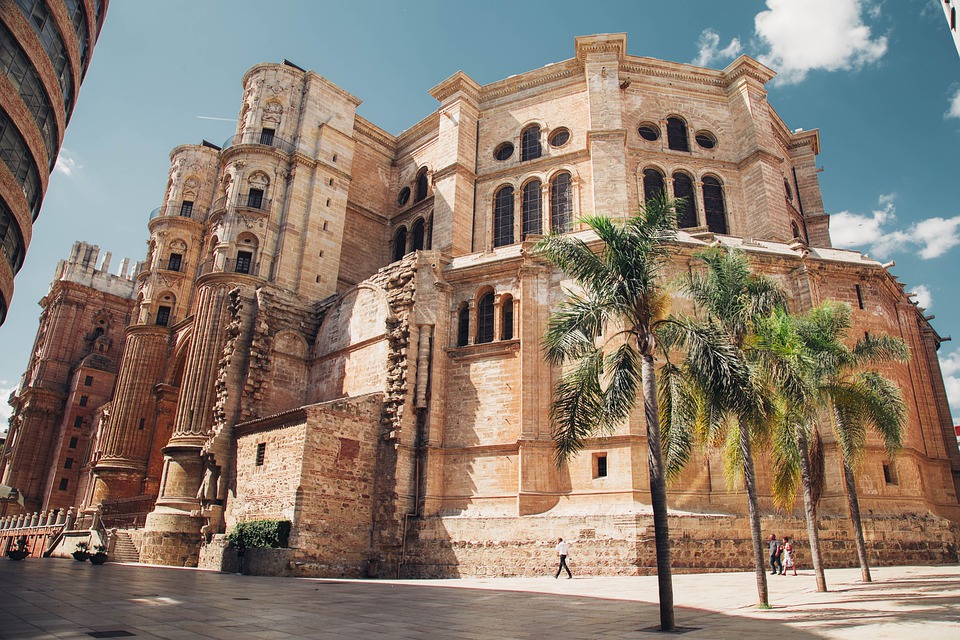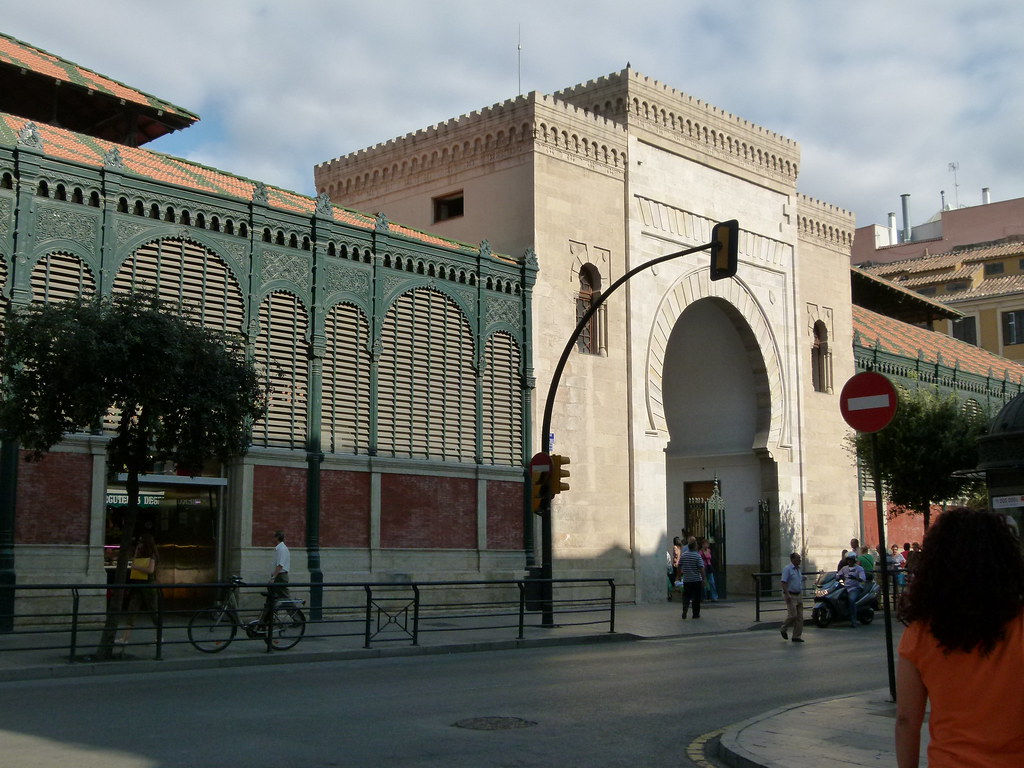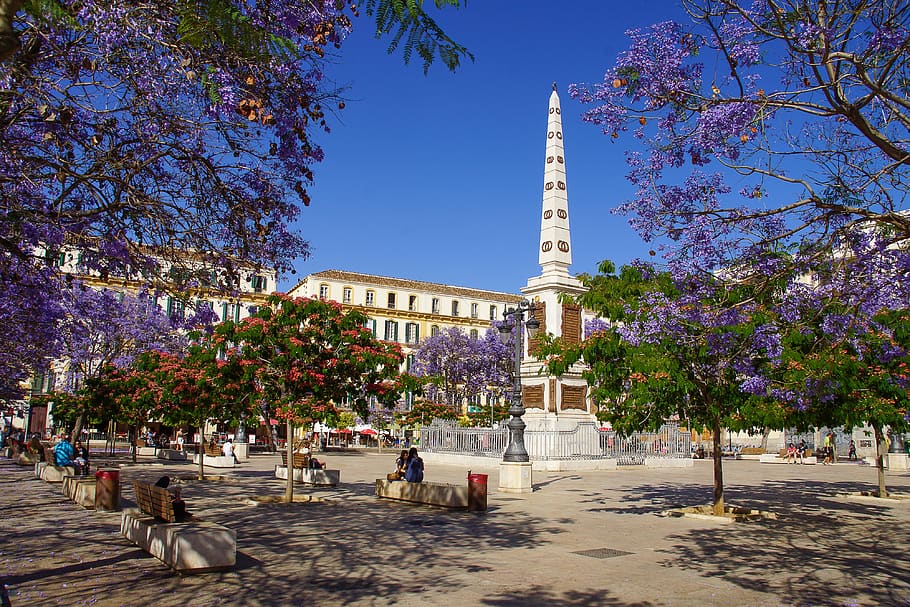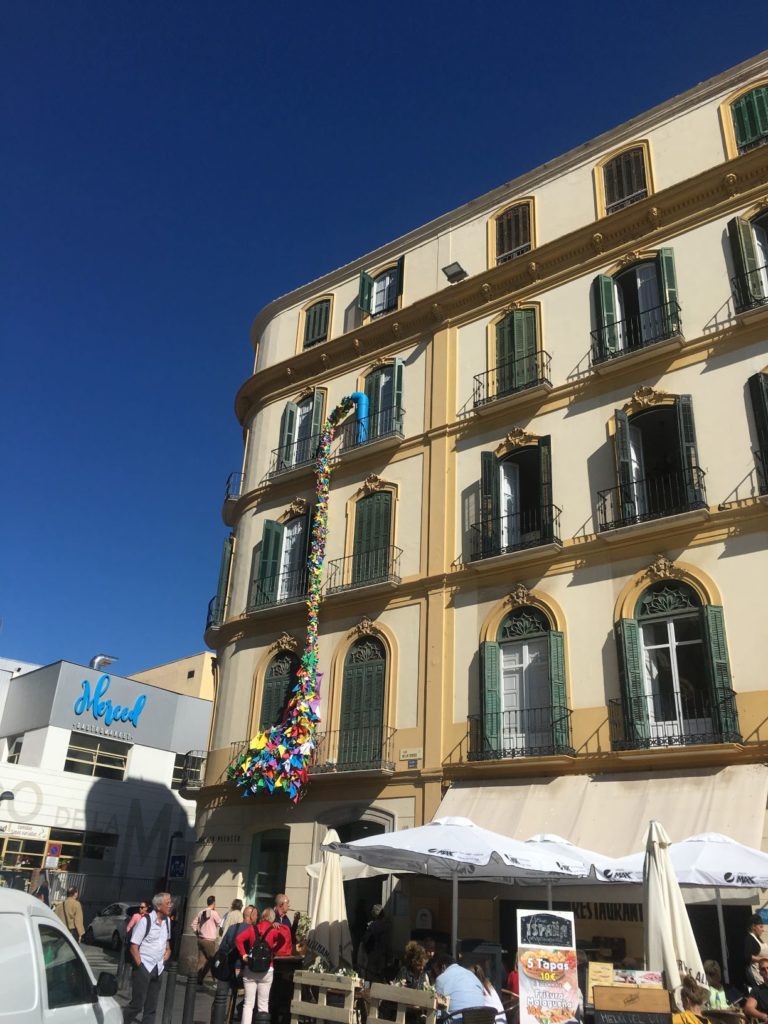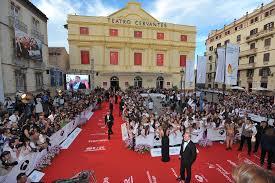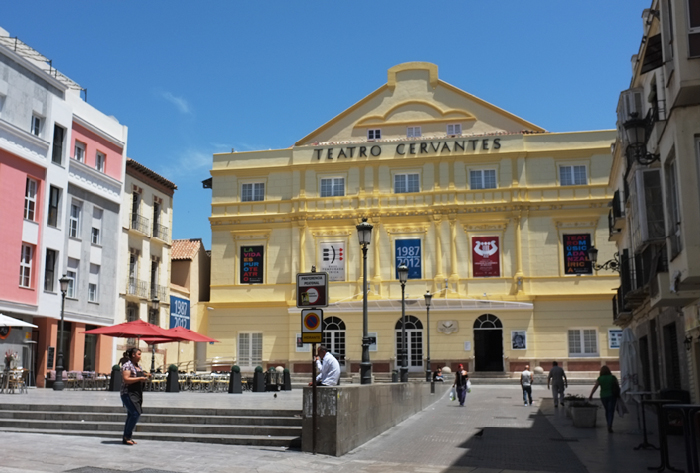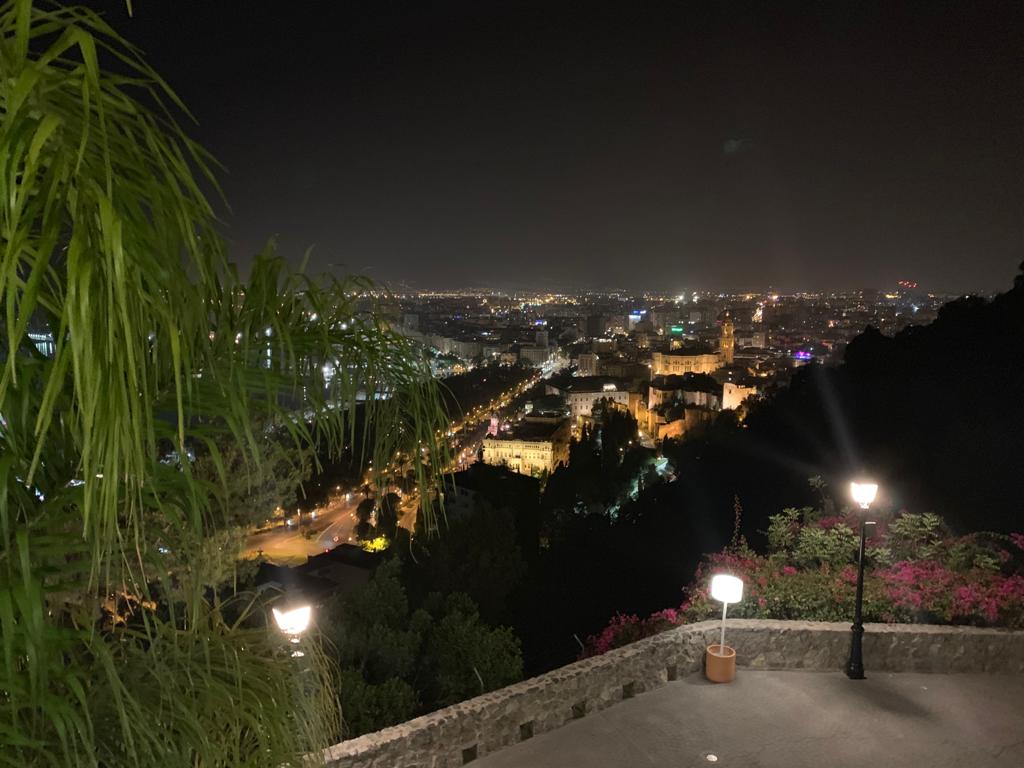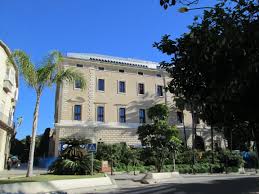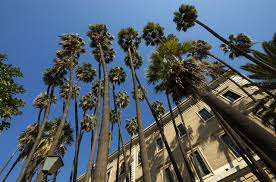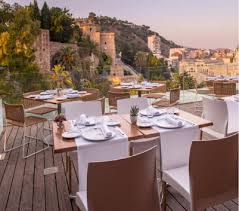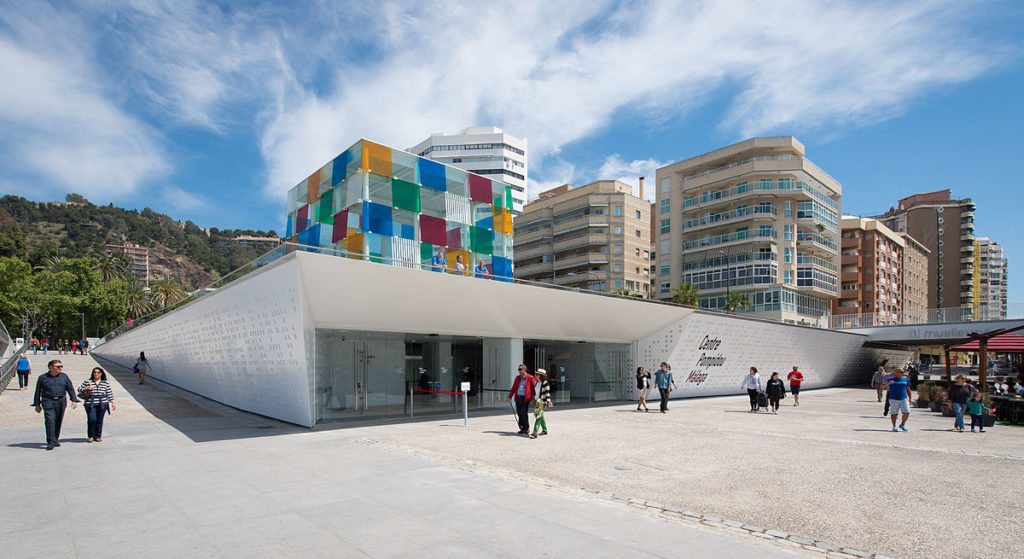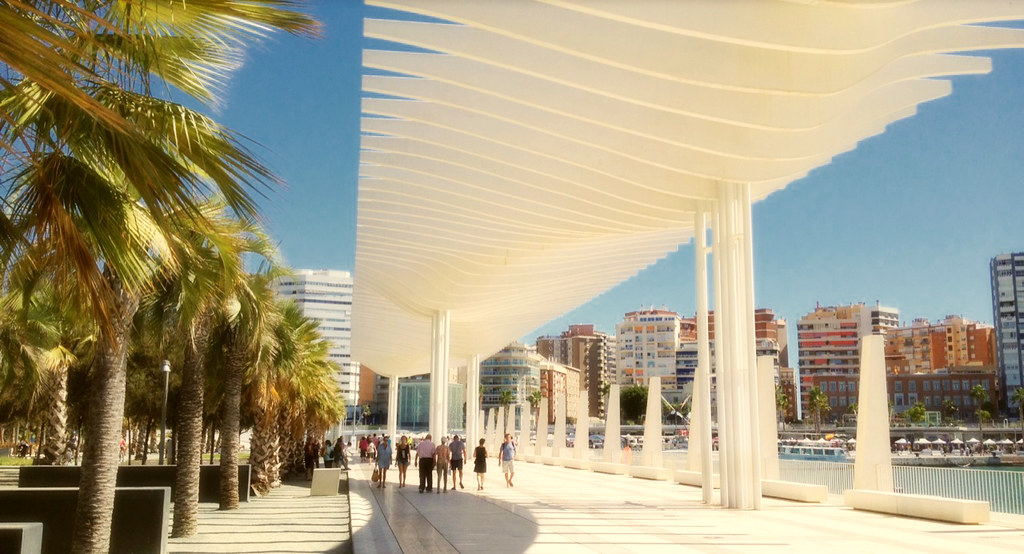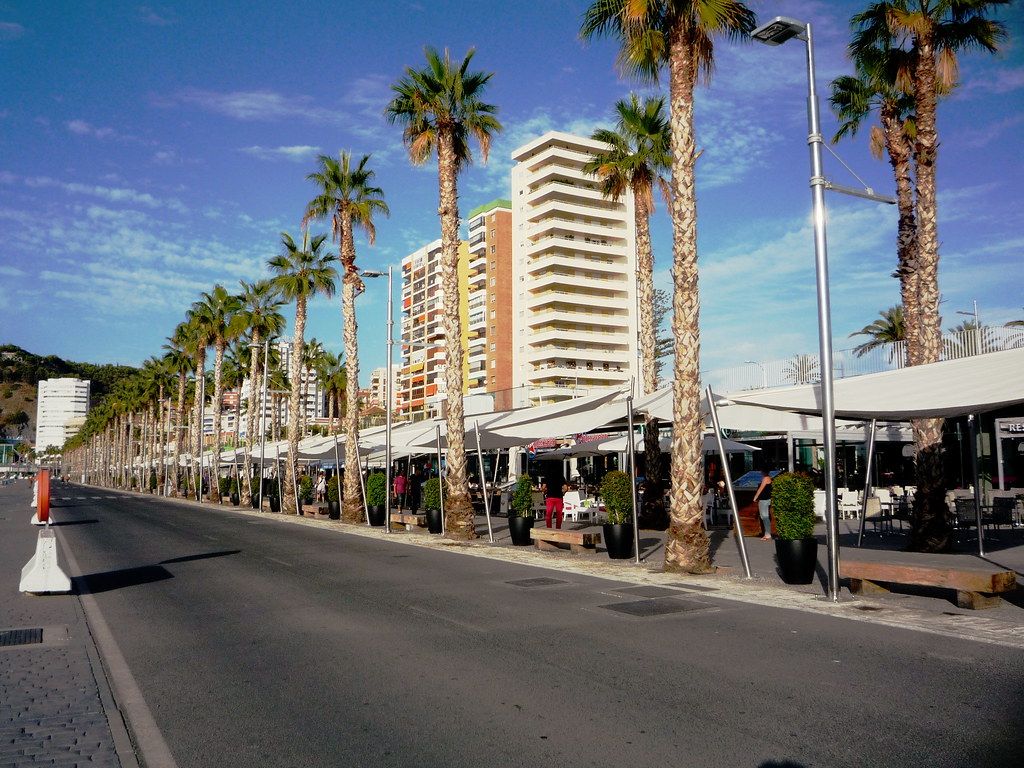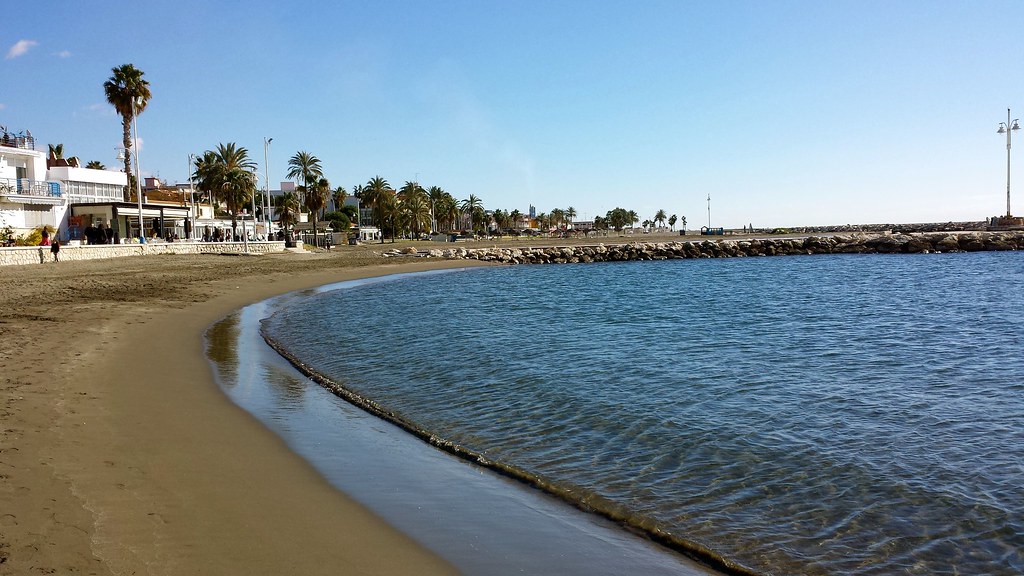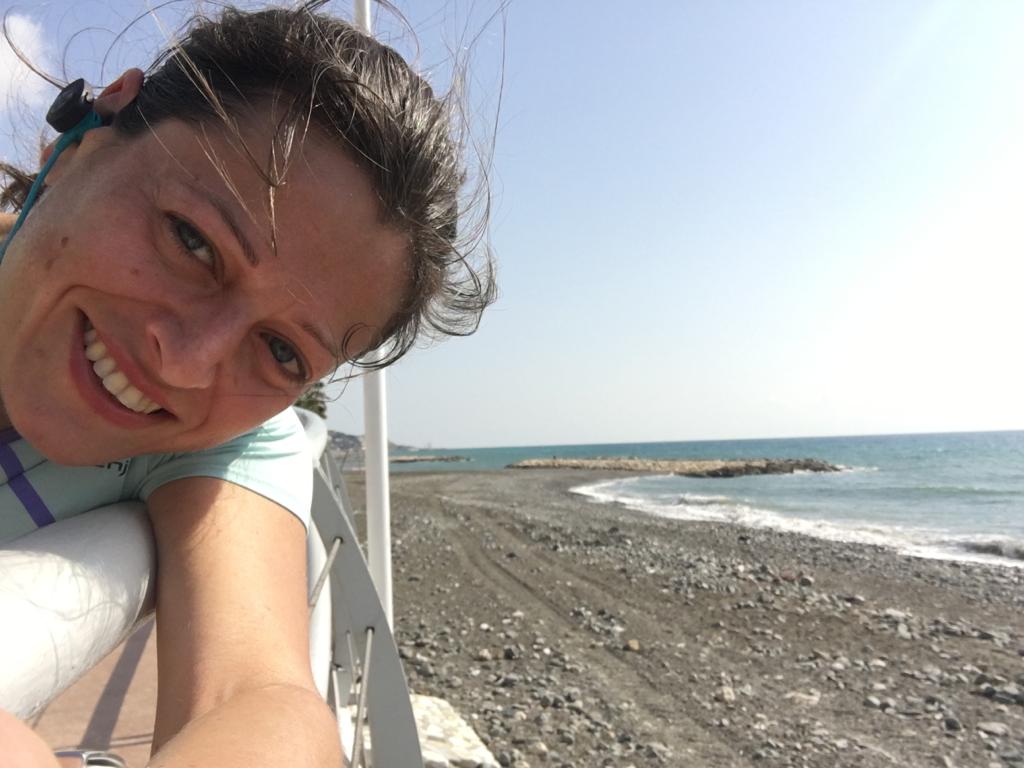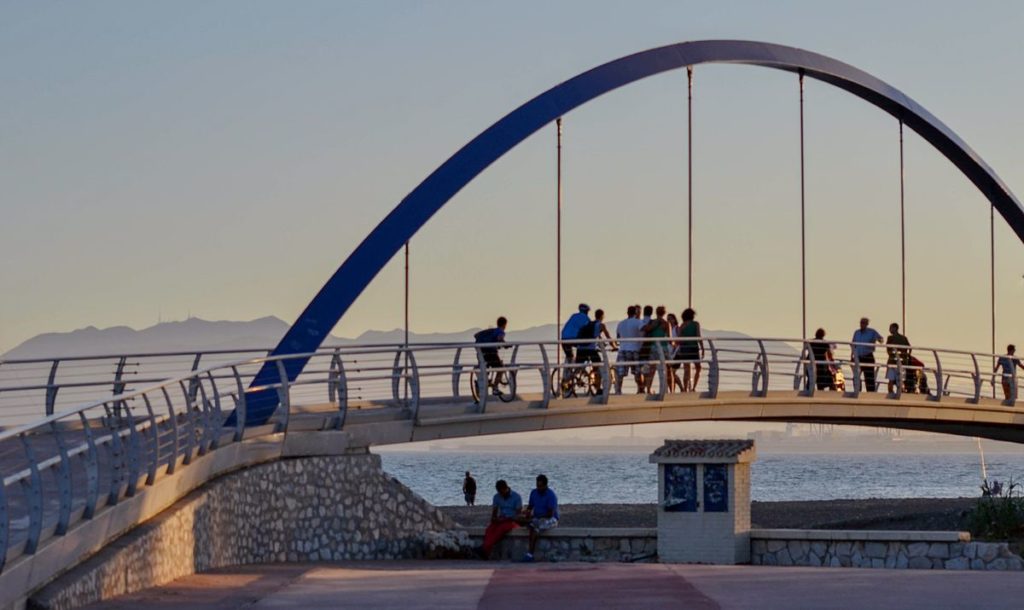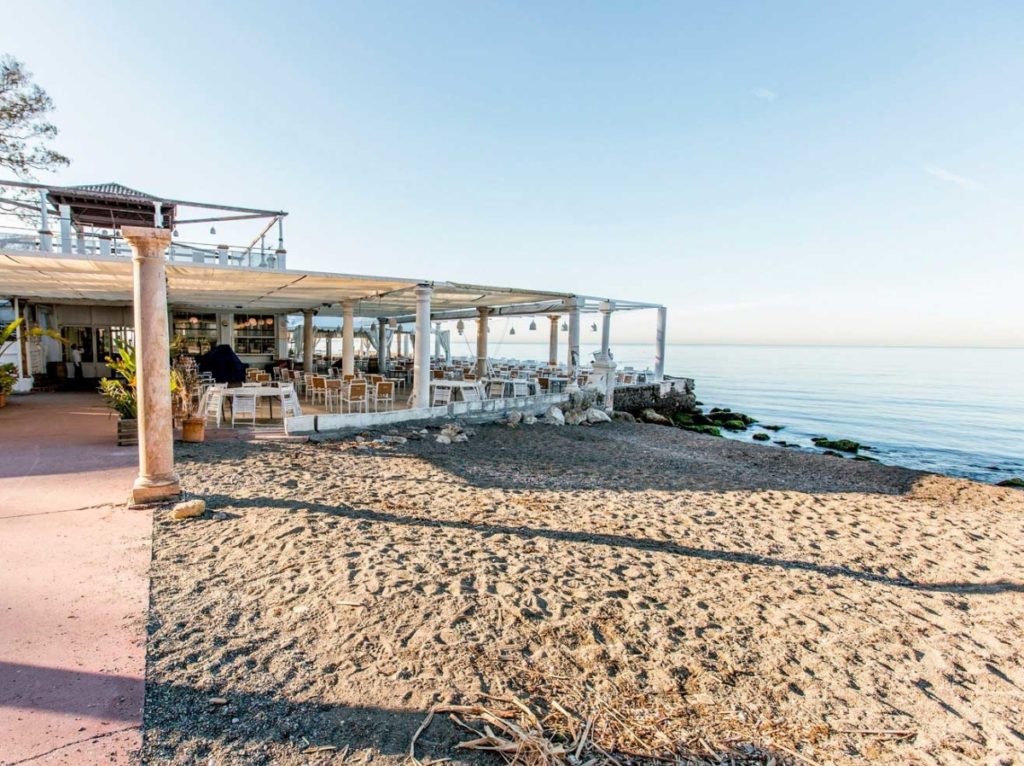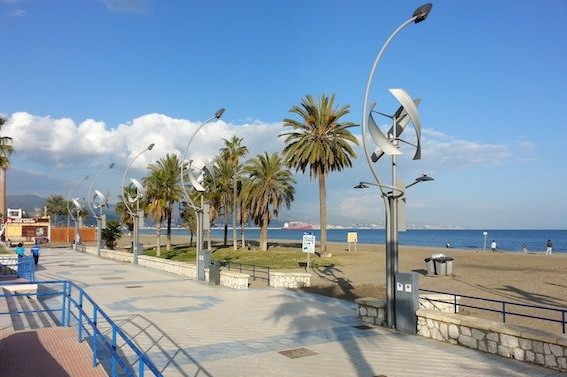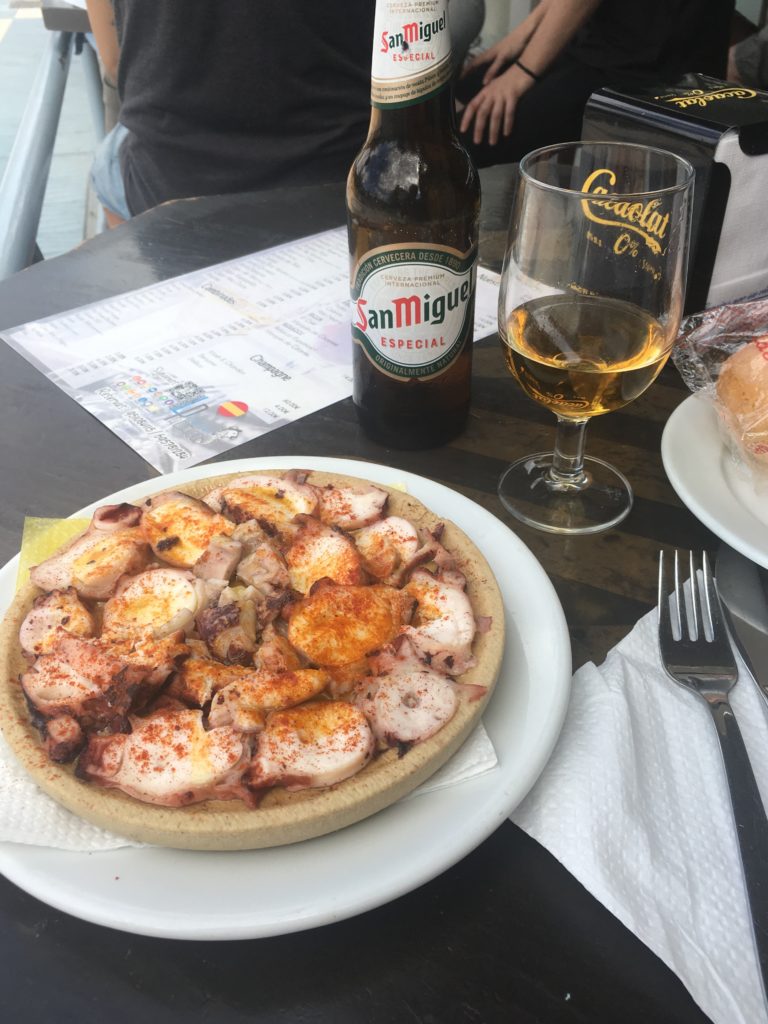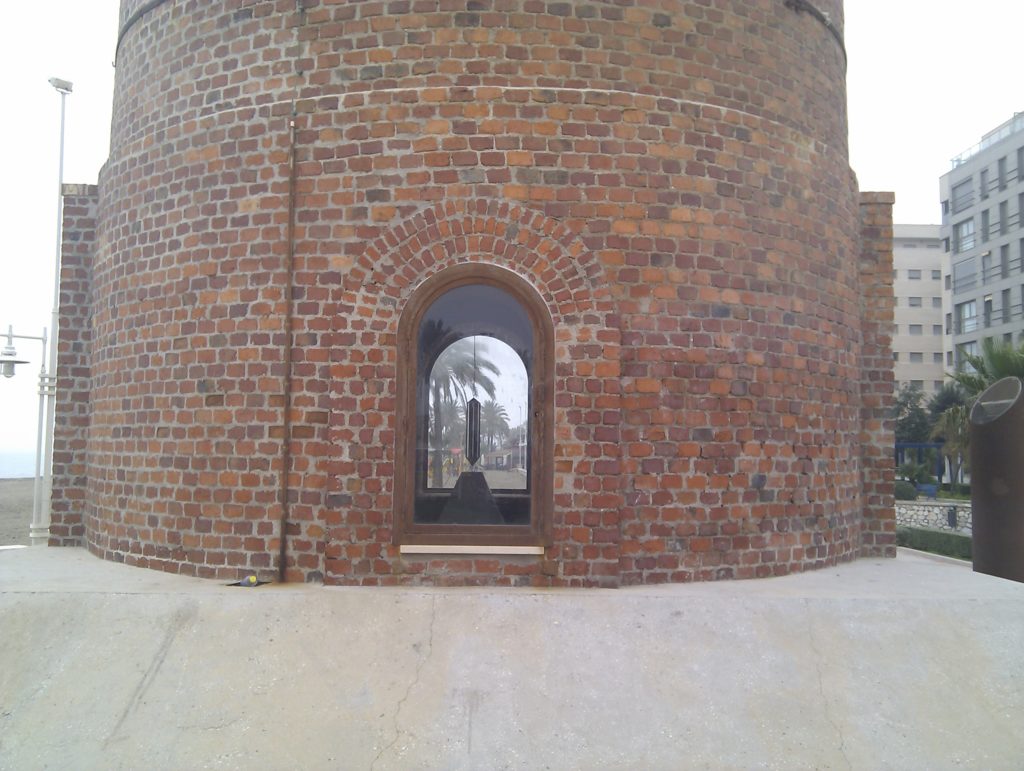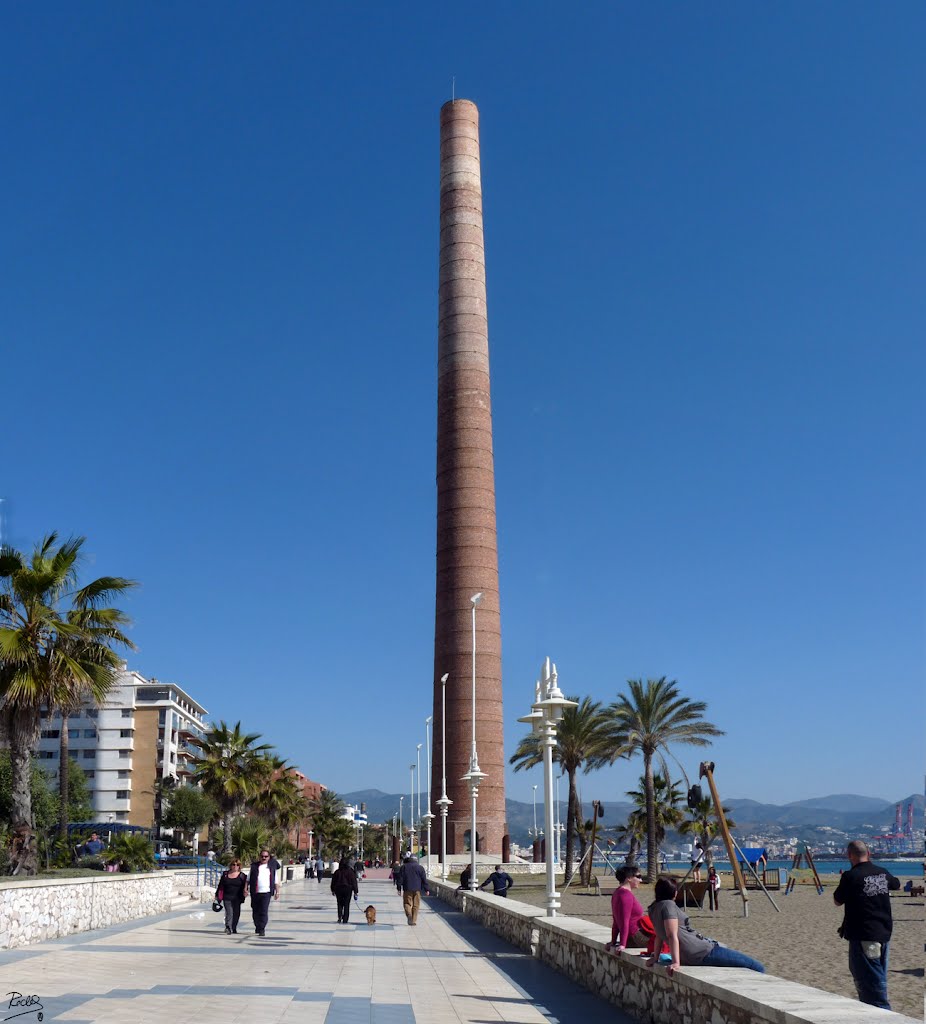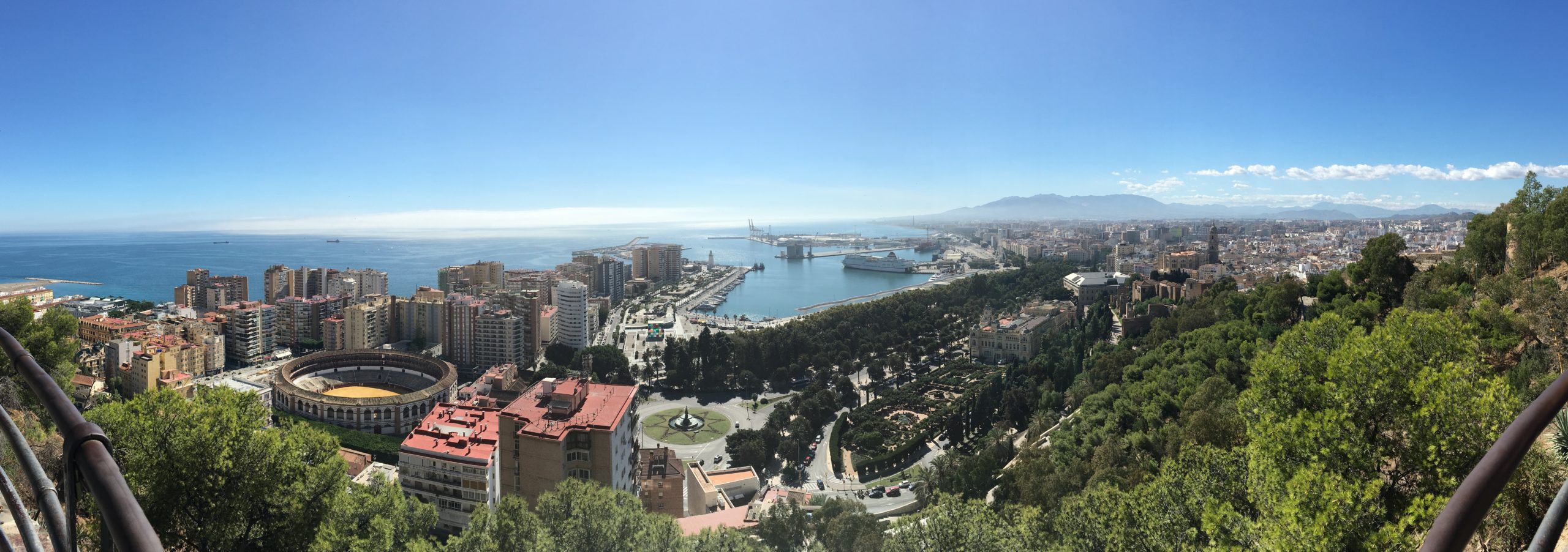
Discover Malaga
There are many reasons for discover Malaga, an ideal destination at any time of the year.
The “Costa del Sol” (Sunny Coast) is called in this way because it boasts more than 300 days of sunshine a year. It’s identified by that coastal stretch of Andalusia bounded to the west by Tarifa (which is part of the province of Cadiz) and to the east by Cabo de Gata (which marks the beginning of Almeria).
Malaga, the capital of the province inckuding the Costa del Sol, deserves a separate speech, it is not possible to assimilate it to the rest of the cities of the Costa del Sol; don’t make the mistake of thinking to Malaga as a mere airport connecting to Andalusia’s most famous beaches and cities.
Birthplace of the painter Pablo Picasso, it is a city full of cultural history and ferments, with a world-class museum offering, where you can enjoy breathtaking panoramic views from above of impressive fortresses, stroll along the tree-lined boulevards, walk the promenade that stretches for more than 10 km from one extreme to another of the city.
Malaga never ceases to surprise me and I try to spend my free time there as soon as I have the chance. Its location is also strategic and allows you to make a series of day visits to different locations.
TABLE OF CONTENTS
Transfers from Malaga airport to the city centre
Malaga Airport is about 8 km far from the center and once you land you have several options to get to the center: bus, train, taxi, cabify.
Bus
A bus, Line A Express, connects the airport with the city with a frequency of 20-25 minutes (from 7:00 to 24:00) and costs 3 euros, you can make the ticket on the bus. Airport Bus stop is located in Terminal 3, floor 0 right in front of the arrivals. In addition, along the way there are intermediate stops such as that of the Maria Zambrano Train Station and that of the bus station.
Train
There is a local train (cercanias C-1) connecting Malaga airport with Maria Zambrano station and downtown (Alameda). This train has a frequency of about 20 minutes (early morning and late evening is less frequent). It starts at 6:44 a.m. and ends at 00:54 and costs 1.80 euros. There are automatic ticket offices before the entrance turnstiles to the station.
Taxi/Cabify
If you have a lot of luggage is the most convenient option, the ride costs about 20 euros for a travel time of about 15 minutes. The taxi stop is always located at the exit of Terminal 3.
Cabify is the equivalent of Uber in Spain, just download the app on your smartphone to book the ride.
Where to stay and how to move around the city
The centre of Malaga is relatively small, corresponds to the crescent-shaped area circumscribed by Calle Carreterìa and the distance to the beach is about 15-20 minutes walk so I recommend staying downtown and preferring to move on foot or by public transport.
Rather than hotels I prefer apartments because you have more independence and flexibility; just take a look on Airbnb to realize that the choice is wide and adapts to all needs (cheap, space etc.). A tip is to choose the place of your stay in a centric but not central area, choice a side street, adjacent to the center (e.g. the side streets to plaza de la Merced), in this way you will ensure quiet nights without being disturbed by voices and noise of the people in the street.
As already mentioned the distances are not so high so for the best way to go to discover Malaga is on foot.
I always prefer walking because this allows me to enjoy the best of the scenery and the beauties of the place, and then remember that we are in the Costa del Sol! So forget about the rain and cold, even in winter temperatures rarely drop below 10 degrees.
Malaga has many bike lanes and a crazy promenade, the city is full of electric scooters that allow for quick and cheap travels; there are about 8 different scooter brands, the most popular are Lime-s, Movo, Jump. To use them just download the app to your phone, the cost is about 0.15 euros/min. If you are not comfortable you can opt for bikes, Malagabici is the rental service offered by the city, the only negative point that makes it less user-friendly for tourists is that you have to buy an EMT card (the same used for bus service subscriptions) in any tobacco shop or in the offices of EMT (Alameda Principal n. 15) and activate it in the EMT offices or by internet. Total costs, 1.5 euros the EMT card, 5 euros the liability insurance; on the other hand, the first 30 minutes of the bike are always free after which the cost is 0.017 euros/min (about 1 euro per hour).
What to See and What to Do
As soon as you get to a new place what do you do? You go out exploring!
I don’t really like the travel agency plans with the list of things to do and see every day, with the strict indication of how much time stay in one place rather than another…when I’m on vacation my favorite thing is to leave the watch in my suitcase, so I suggest to do tha same! Once arrived in Malaga, once settled and refreshed I recommend you to go out and then get lost in the streets of the center.
The journey to discover Malaga starts from calle Alcazabilla that will take you to one of the jewels of the city, the Roman theater on which stands imposing and majestic Alcazaba.
The Alcazaba is a fortress or rather a citadel (this is precisely the meaning of its name) built in the year thousand during the Arab rule on a fortified structure of Phoenician origin. This wonderful building, which represents a kind of miniature of the Alhambra of Granada, is one of the most important testimonies still visible of the Arab period of Malaga.
There are 2 panoramic points from which you can admire the complex (teatro-alcazaba), one is the square that opens on the Alcazabilla calle, the second is accessed by Calle Cilla (a cross of Alcazabilla calle) by walking a staircase you can reach a panoramic point (Mirador de La Alcazaba).
To access the fortress you can enter from the side of the Roman Theatre in the Plaza de Aduana, from here you can proceed to the visit. From the Alcazaba you can also enjoy a fantastic view of the city, the ticket costs 3.50 euros and you can also buy a cumulative ticket to visit Gibralfaro Castle for a total of 5.50 euros.
Another must-see panoramic point from which to admire the whole city and the nature stage that Malaga offers is from the top of its castle, Gibralfaro Castle. It was built to protect the Alcazaba, in fact its location, perched on Mount Gbralfaro, was strategic for the sighting of enemies from the sea.
Reaching it on foot is a nice walk (a bit tiring in the heat…), but it is absolutely feasible by walking along the Paseo Don Juan de Temboury and continuing along the path; A good alternative is bus No. 35 (stop on the southern side of the Paseo del Parque).
Just before arriving at the entrance to the castle stop at the panoramic point (el parador Nacional de Gibralfaro), it is the best panoramic point in the city, from Plaza de Toros to Malagueta, with a complete view of the paseo del Parque and the port. The sunset is definitely the best time of the day to observe the city from this point and discover the beauty of Malaga.
If after the visit and the long walk to get to the top you want to rest, in Calle alcazabilla you will find one of the most famous places in Malaga, Il Pimpi, in Malaga is an institution for which it is a must and in fact there is always queue to sit at its tables. The place is huge and the interiors are an anthem to tradition and its glorious history: ancient bullfighting billboards, walls covered with photos with celebrities who have been in the room; corridors and halls decorated with wine barrels autographed by them, including Picasso, the Duchess of Alba, Antonio Banderas (beloved “Malagueño” and with a bit of luck you could also meet around here).
Taste the typical dishes of Andalusian cuisine, salmorejo, ajoblanco, “pescaíto” (the classic fried fish), ham, cheeses. Many dishes on the menu are also perfect to share as tapas (mini portions suitable for an aperitif but also as dinner with the possibility to taste different dishes).
Even if you don’t want to stop I suggest you to enter the club and cross it and then get out across the street, in Calle Granada; it is a pedestrian street full of small shops, bars, small restaurants (how to forget the tapas and pinchos of Casa Lola!). Together with Calle Larios it is the most emblematic street in Malaga. From Calle Granada, continue your tour to discover Malaga heading to Plaza de la Costitucion and from here to Calle Larios.
Calle Larios is considered one of the most elegant streets in Spain and is full of shops, boutiques so it’s the perfect place if you’re planning to go shopping.
During the Christmas period Calle Larios transforms into one of the most spectacular areas of Malaga due to the lights and music shows. During summer, however, when the heat becomes unbearable, it is covered with white tarps so it always is a pleasure to walk along the main street, in addition there are many events that see calle Larios as a focal point.
During the Festival de Cine de Malaga, the street is decorated with a film theme with a red carpet. In addition, in August it becomes the beating heart of the Feria de Malaga and in September hosts the Fashion Week of Malaga and its 350 meters of haute couture catwalk (the longest in Europe).
I open a small bracket on the Feria de Malaga that represents the most important summer festival in Andalusia.
La Feria was born to celebrate the recapture of the city by the Catholic kings Isabella and Ferdinando in 1487, lasts a week (traditionally opens on the Saturday of the second week of August and ends the following Saturday) and is an exuberant street party during which it is celebrated in flamenco steps and toasts based on “fino”, typical Spanish liquor. Millions of people overcrowd the city streets by day and night dancing and drinking.
Some cities feel very competitive when it comes to partying. For example, the Feria de Malaga is in sharp contrast to seville’s Feria de Abril. The game between the two cities every year is renewed and consists of proposing the most majestic and amazing fair.
Continuing the walk through the cobbled streets of the old town you will be impressed by the Manquita (“the little monk”) nickname of the Gothic Cathedral. Overlooking the small Obispo square you can immediately see that one of the bell towers is incomplete. The Catholic rulers after the “Reconquista” had begun its construction on the site of a mosque but the money was gone, interrupting the work. In addition to the colossal and bright interiors the most pleasant element of the Manquita is the small garden that surrounds it, oranges, soaring palm trees, aprisco flowers, you will want to sit on one of the benches and enjoy the mini paradise that surrounds you.
The ticket costs 6 euros (10 the cumulative, including cathedral entrance and visit on the roof) but it’s definitely worth it.
Whether you have to shop or need it during your stay, it’s definitely worth a morning visit to the Mercado de Atarazanas (it’s open from 8am to 3pm so don’t be lazy) to discover deeply Malaga. The market will hit you immediately with its nineteenth-century architecture even if its origins go back a long time ago having been the headquarters of the Nazaries shipyards of the Moorish era (because until 1700 the sea reached the current market!) and in the fourteenth century after the conquest of the city was used as a warehouse arsenal, military hospital and barracks.
The only evidence of the Moorish construction site is one of the entrance doors in the shape of a horseshoe, the market was in fact designed from scratch using glass and iron but managing to conceive everything in the neo mudejar style, stop to observe the stained glass of the facade, depicting the historical landmarks of Malaga. Inside you can buy meat, fish, fruits and vegetables but it’s a great place to have lunch, eat some tapas and fresh “pescaito frito” (Andalusian fried fish).
Following the discover of Malaga, you can’t miss a walk in plaza de la Merced, easily identifiable by the obelisk located in the center of the square and erected in honor of the geeneral Torrijos and his comagn d’arms who were shot on the beach of San Andrés on the orders of Fernando VII.
Pablo Ruiz Picasso was born in this great square. At number 15 the family home has been transformed into a foundation, the Fundacion Picasso Museum Casa Natal. In the rooms, which partly still maintain the atmosphere of a private house, are exhibited family photos and the first works that little Pablo had made under the vision of his father, teacher at the Academy of Fine Arts of Malaga and amateur painter himself. In the surrounding area there are many tributes to the illustrious painter, always in the square you will find, sitting on a bench, a bronze Picasso greeting passers-by and in calle Huerto del Conde you will find various murals inspired by the works of the illustrious painter.
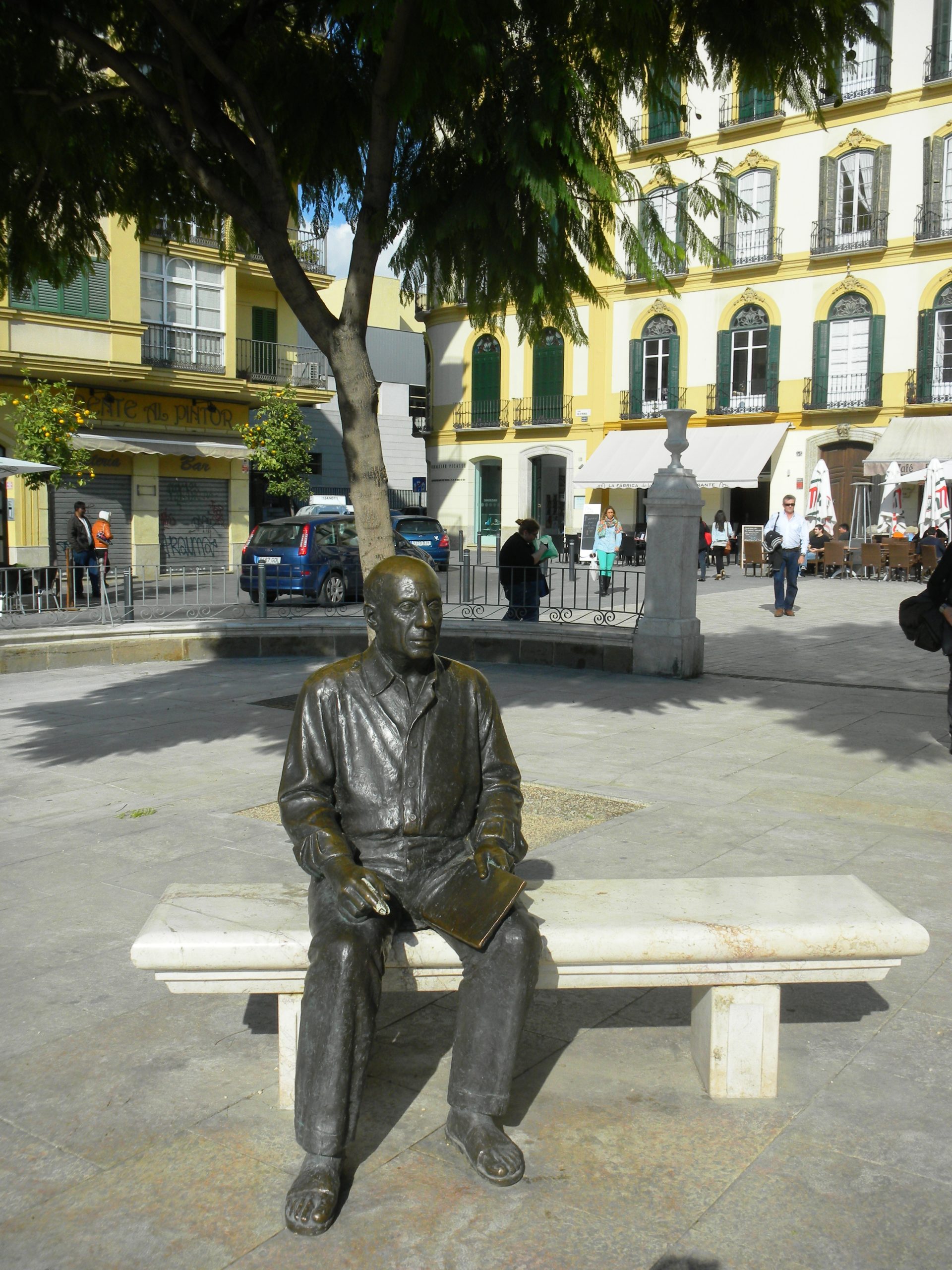
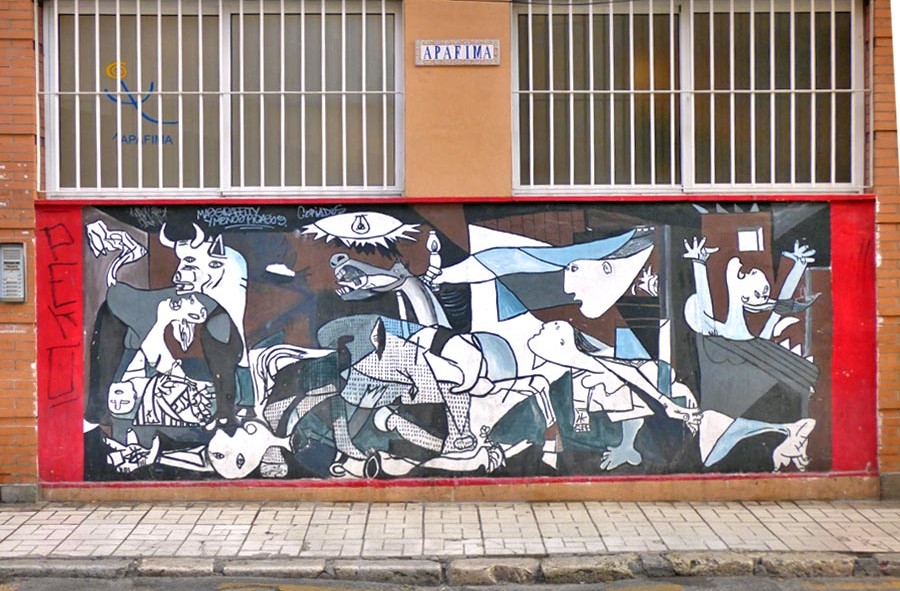
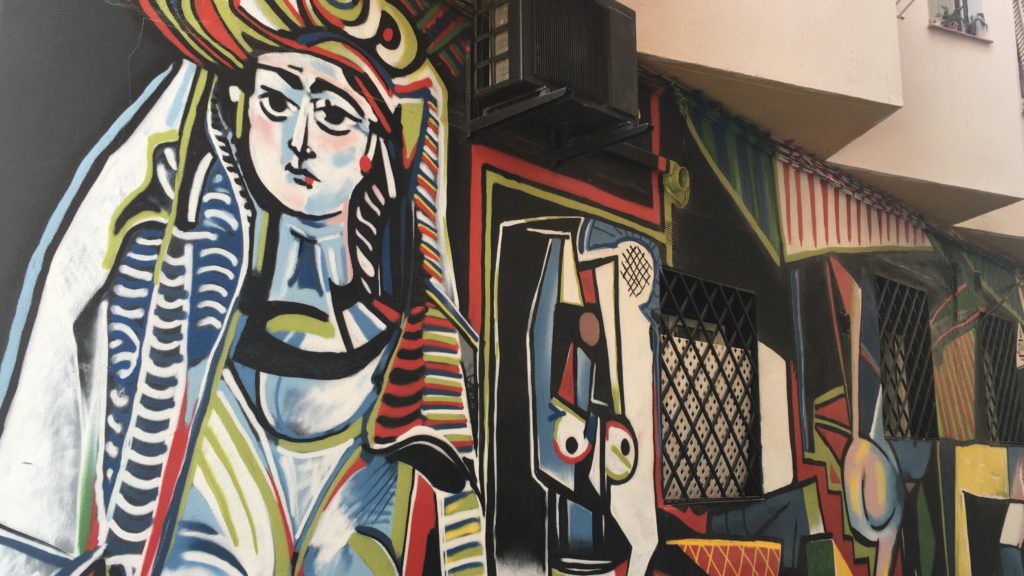
Plaza de la Merced is a riot of bars and restaurants, you can’t figure out where one ends and where the following begins.
My favorite bar to eat some homemade tapas and have a beer in peace is las Camborias, just a few meters from the Plaza de la merced, in Calle Huerto del Conde; it is an informal and bohemian place, with personality, and Julia, the owner, is always attentive and able to create a family atmosphere with her clients.
Continuing the trip to discover Malaga and walking along Calle San Juan de Letran or the parallel Calle Gomez Pallete you can reach the Teatro de Cervantes, the main scenic space of the capital of the coast of Sol. If you are interested, it is worth consulting the programming on the dates on which you will be in Malaga, among other things it is the venue of the Festival de Malaga de Cine Español that takes place every year in March.
Discover Malaga‘s terraces
As already mentioned I love the panoramic points so I always look for places from which to admire from top to bottom the surrounding territory and Malaga is right for me because in the city there are many terraces in which to drink and tease something enjoying the view. I’ll show you some, try to discover new ones once in Malaga!!
Alcazaba Premium Hostel’s Terrace
Many hostels have a terrace with a bar, the Alcazaba premium Hostel has a strategic location to admire the spectacular view of the Alcazaba and the Gibralfaro Castle. Enter and take the elevator to the top floor, you can drink some cocktails and enjoy the view all around you.
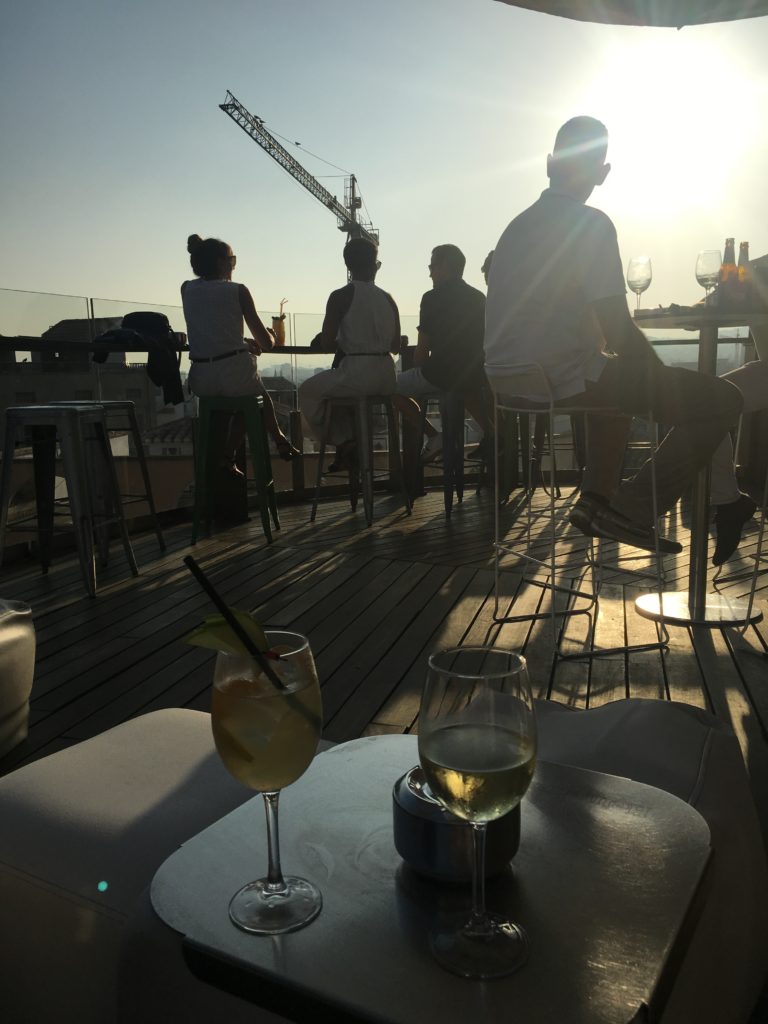
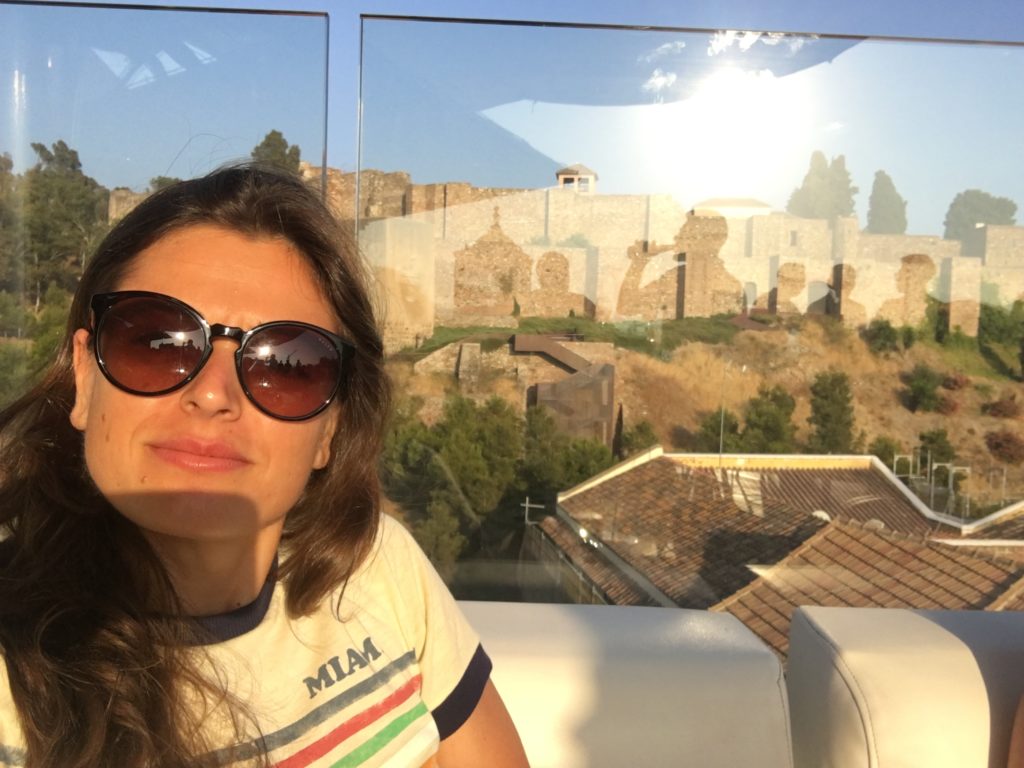
Alcazaba Premium Hostel Terrace
Parador de Malaga Gibralfaro‘s Terrace
Near the Castle there is a Hotel/Restaurant, if you want a dinner overlooking the city and the sea is the ideal place. But remember to book and ask for a table outside.
Chinitas Club Lounge Terrace

On the top floor of Chinitas Urban Hostel you’ll find a two-storey terrace where you can have a drink at the sight of the Cathedral. I must admit that the view is not the best because you do not observe the cathedral in all its majestic beauty.
Even if you don’t want to go up on the terrace I recommend walking this narrow lane, el pasaje de Chinitas, where the hostel (which is named after it) is located. It is a small pedestrian street full of artisan shops that are accessed by the plaza de la Constitucion. The name comes from an actor (Chinitas, for that matter), who used to work in a café of the Pasaje, el Cafè de Chinitas, where writers and singers of flamenco were once gathered and to whom Federico Garcia Lorca dedicated a poem.
Terrace of the Aduana
It is accessed by the Museum of Malaga, on the 4th floor. It is a restaurant with terrace that gives to the Alcazaba, on the opposite side of calle Alcazabilla; the view is enchanting, you can observe the harmonious fusion of stone with vegetation, a wonderful sight is assured.
Discover Malaga while walking
In a place that enjoys more than 300 days a year of sunshine it is nice to walk around and enjoy the beauty that surrounds us. What better way to discover Malaga? I’ll bring you some walks suitable for all seasons.
Paseo del Parque
Walking along the Paseo always gives me a feeling of tranquility and serenity, it is an extraordinary tree-lined boulevard full of palm trees and divides the city in two, on the one hand the old town with the Alcazaba, the Roman theater, the cathedral, and on the other the sea, with the marina and the beaches.
Heading out to sea you will encounter a colorful structure (often appears in the photos of Malaga), it is the Centre Pompidou, dedicated to contemporary art.
Malaga is also known as the city of museums, boasts a museum offer that touches on the most varied themes. The must-sees are the Picasso Malaga Museum, the Pompidou Centre, the Carmen Thyssen Museum, the Malaga Museum, the Centre for Contemporary Art. CAC Malaga.
I for the moment I visited the Picasso Museum and the Carmen Thyssen Museum and completing the museum tour represents one more reason to return to Malaga! There is always something new to discover in Malaga!
The Picasso Malaga Museum is housed inside the Buenavista Palace, a historic building whose origins date back to the 16th century. It is a magnificent example of typical Andalusian architecture, with its characteristic blend of Renaissance elements and mudéjar-style decorations. Exhibits at the museum will not only find paintings but also ceramics, illustrations, sculptures, engravings and drawings that trace Picasso’s prolific career from his early days to his death and highlight its revolutionary scope.
The renaissance palace of Villalon houses the Carmen Thyssen Museum, which houses a collection of more than 230 works of Spanish painting from the 1800s with a focus on Andalusian artists. Periodically temporary exhibitions are staged, often featuring women and the female universe.

I recommend them both, the entrance fee is 6 euros and in the summer you can also take advantage of it to escape the heat of the hottest hours.
Muelle 1 – Palmeral de las Sorpresas
Crossing the Paseo del Parque and the Pompidou centre you will be in Muelle 1, an outdoor shopping centre with numerous restaurants and shops. Opened in 2011, the Muelle 1 together with the Palmeral de las Sorpresas (literally the palm of surprises) represents a place where modern design blends harmoniously with nature. A nice walk, bike or scooter ride allows you to fully appreciate the place and discover Malaga.
The concrete pergola structure and the many palm trees (there are more than 400!) guarantee protection even on the hottest days.
On one side you will see the Ferris wheel, on the other the Lighthouse, the Farola that marks the end of the promenade and access to the Malagueta playa.
Playa Malagueta and Pedregalejo
The Malagueta playa is the city beach and during the summer season it is very busy. It is full of chiringuitos (bars, and clubs to drink with terraces on the beach) and rustic seaside restaurants.
If you are hungry rather than stopping here I recommend renting a scooter and walking along the promenade to go all the way to Pedregalejo. The promenade is perfect for running and walking.
The area was born as a fishing village then turned into a succession of small restaurants, kiosks, apartments overlooking the beach.
Discover also food of Malaga! Typical and unmissable are the Espetos, grilled fish skewers, on a kind of barbecue arranged inside a small boat. The original and oldest version of Espetos is with sardines but they are also found with squid, octopus, cuttlefish, pargo/besugo (in English called red snapper, reddish-coloured saltwater fish and very juicy meat) and other fish.
In winter during the weekend the malagueños flock to the local restaurants, in summer tourists fill the premises every day.
In the area there is one of The historic baths of Malaga, los Baños del Carmen, the proximity to the adjacent road makes the site idyllic for sunbathing or a swim but I recommend it to dine (in this case you’ll want to book) or have a drink at sunset contemplating the horizon.
The promenade is perfect for walking, running, biking and outdoor activities. In addition to the most common and popular east coast (from Malagueta to El Palo) one area where it is pleasant to enjoy the sun and relax is the west coast, the paseo husband Antonio banderas. A bike path runs along the entire coastline and there are many spaces dedicated to sports activities. There is no shortage of chiringuitos where you can refuel and quench your quench your life!
Along the way you will come across a chimney, known as the “Chimenea Monica”, a testament to Malaga’s past as an industrial power (in the second half of 800 Malaga was the second most industrialized city in Spain) the surrounding area developed as a working-class district, the barrio de Huelin.
Discover Malaga and its surroundigs: daily excursions from Malaga
Malaga is in a strategic location because it makes it possible to make day trips to lovely locations.
I’ll bring you the places I visited in the day starting from Malaga and the link to access the article contain tips and some tips on the trip.
- Caminito del Rey, a path in the gorges and canyons of the mountains of Malaga really suggestive
- Nerja, the “balcony of Europe” and Frigiliana, one of the most beautiful villages in Andalusia
- Antequera, a city declared a Unesco World Heritage Site



